‘Do you believe in fairies?’ IN this blog, Heather Millard, our Social History curator describes the research she’s been doing into the Cottingley Fairies….
If you’ve visited Cliffe Castle since May, you can’t help but have noticed the exhibition Fairy Folklore that’s our big summer exhibition. It explores superstitions, traditions, alleged sightings, and even the use of Fairy imagery in artwork, literature and even household appliances!
It’s an interesting show, and we’ve chosen to do it this year for a very specific reason. 2017 sees the 100th anniversary of the first two ‘Cottingley Fairy’ photographs, which were taken by Elise Wright and Frances Griffiths in the beck behind the house they lived in. They’re not the only focus of the show, but it is a story that’s always intrigued me. The ‘Fairies at the Bottom of the Garden’ have provoked debate for nearly a century, since they were first published in 1920 by the well known author Sir Arthur Conan Doyle. Most famous for writing Sherlock Holmes, a master of scientific logic, many wondered at his belief in something so fanciful.
Researching further into the story has been great fun and extremely interesting As well as reading various books on the subject I spent several enjoyable days immersing myself at in the archives held by Special Collections at the Brotherton Library at Leeds University reading various pieces of correspondence and related literature on the subject. Being able to read the actual letters written by Arthur Conan Doyle, Edward Gardner, Elsie and Frances proved illuminating. Exploring the village of Cottingley itself, to see the impact the story had has been interesting -there are road names like Fairy Dell, Titania Close and Goodfellow Close scattered through the village.

You can’t actually visit the part of the beck where the photos were taken, as it’s on private property but the glimpses I got were evocative enough!

The pictures were taken when Elise Wright was 16, and her cousin Frances was 9. Frances and her mother were staying with Elsie’s family in Cottingley during WWI whilst her father was serving in the army. Frances attended a local school, whilst Elsie worked for Gunnings, a local photography studio ‘touching up’ photos.
Frances frequently got wet playing in the Beck behind the house on Main Street, Cottingley but claimed it was because of the fairies there. Needless to say, the grown ups were not particularly convinced by the explanation, but the girls insisted that they’d prove it. The two borrowed a Midg Camera owned by Arthur Wright, Elsie’s father, who was an amateur photographer, and went off to take some photographs…
On developing the photographic plates in the darkroom that Arthur had created in the cottage, he was rather taken aback to see fairies and gnomes in the two pictures. Even so, the pictures remained a family joke until 1920.
Polly, Elsie’s mother attended a meeting of the Theosophical Society in Bradford on”fairy life” in 1920. Although Polly had been initially skeptical of the photos, hearing a talk about fairy life as a reality, she changed her mind, and showed the two fairy photographs taken by her daughter and niece to the speaker. As a result, the photographs were displayed at the society’s annual conference in Harrogate, held a few months later. There they came to the attention of a leading member of the society, Edward Gardner and via him, to Sir Arthur Conan Doyle, who requested that Gardner investigate further, as Conan-Doyle was about to embark on a trip to Australia for a lecture tour and and was unable to visit or investigate himself. The archives at the Brotherton include some of the correspondence between the two at the time.
Additional cameras were provided, and as a result three more photographs were taken, each purportedly showing fairies. Gardner had the slides verified by an expert, Harold Snelling, who confirmed the negatives had not been tampered with. In the Christmas edition of The Strand, 1920, Conan-Doyle publishes his article about the Fairies, calling it an epoch making event . Although the names of the girls are disguised (they are called Iris and Alice in the article) and the village was not named it didn’t take long for the real names and locations to be known.

The article was followed up by a subsequent article with the additional three photographs, and the publication of a book by Sir Arthur Conan-Doyle in 1922 called The Coming of the Fairies. In it, he gave further details, and included an article by Gardner on the science of fairies and their classifications. (which is good for a giggle!)
Reactions to the fairies were mixed. Some believed adamantly that the fairies were indeed real whilst others, including Harry Houdini (the well known illusionist and a friend of Conan-Doyle) that they had to have been faked. Houdini wrote:
‘’Messrs, Price and Sons, the well known firm of candle makers, inform us that that fairies in this photograph are an exact reproduction of a famous poster they have used for a year, to advertise their night lights.
‘I admit on these fairies there are wings, whereas, our fairies have no wings,’ said a representative of the firm to a Star reporter, ‘but, with this exception, the figures correspond line for line with our drawings’.
An entertaining piece of correspondence I came across in the archives was a letter from a lady in the 1970s that claimed that the fairies in the photograph weren’t real, but at the same time wanted to share her own fairy sighting (a brownie near Myrtle Park, Bingley).
At the time of publication, the girls kept quiet, as they didn’t want to contradict or embarrass such an eminent man as Conan-Doyle when he was so adamant about the authenticity of the photos. They later described the situation as one that had got away from them. Interest eventually waned, Elsie and Frances both moved away – entertainingly for me, I found that Elsie had moved to just outside Nottingham, my home town, and Frances too had lived there briefly.
In the 1980s, both Frances and Elsie admitted that the photographs had been faked. Elsie had copied out and enlarged the dancing fairies from the Princess Mary Gift Book (a fundraising publication in 1917), cut them out and mounted them on hatpins for the photography.

Intriguingly, although Elsie claimed all five photos were faked, Frances still claimed that fairies did exist, and that the final photo of the five was real. She would talk about in a book she wrote Reflections on the Cottingley Fairies
I have also been lucky enough to have been introduced to Elsie’s son, Glenn who was kind enough to lend us never before seen items for the exhibition – a wonderful drawing of Titania (Queen of the Fairies) dating from 1917 – the year of the photos and a rather charming Gnome ornament, made in the 1970s illustrating her continuing love of art.


Also not seen before are a pair of photograph albums belonging to Elisie and Polly, which contain numerous images of Cottingley and the surrounding area. They would be fascinating objects in their own right, regardless of their connection to the famous story – most albums of the era don’t tell you where or who they are depicting – most of the photos have captions, making them invaluable to the historian. Being able to look through them was a real thrill.

That a hundred years later, people still debate the reality of fairies and whether or not the photographs were real is a testament to how the story captured the imagination of so many around the world. I think it’ll continue to inspire art, literature and even films for years to come.
In the meantime, I think I’ll leave this blog’s final words to Elsie, as I think it rather apt .
If people wish to believe in fairies, there is no harm done. And if people wish to think of us as a couple of practical jokers, or two solemn faced Yorkshire comedians that’s alright too. But the word liar is a rough word for a true or untrue Fairy story.







One Response
The Cottingley fairies: how to investigate a mystery, how the tale of the fairy photographs of two sisters from Cottingley in Yorkshire can give us an insight into how you should go about investigating a mystery and the pitfalls to avoid. – https://youtu.be/ij-uXtRrR6A